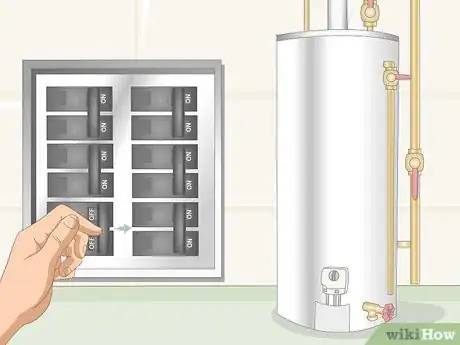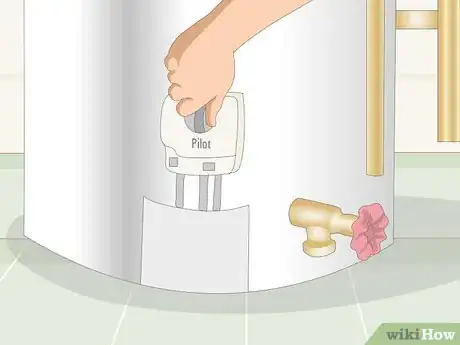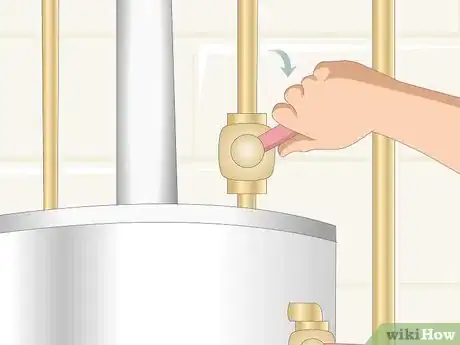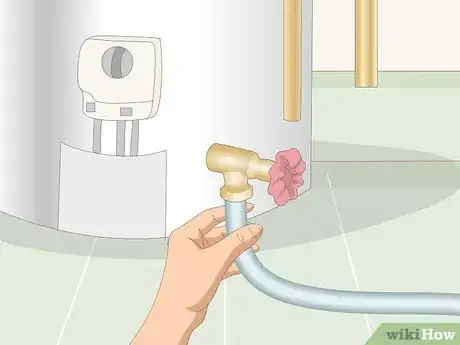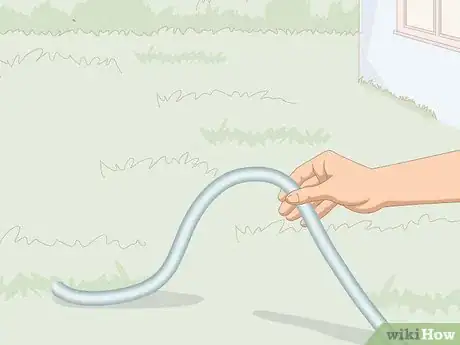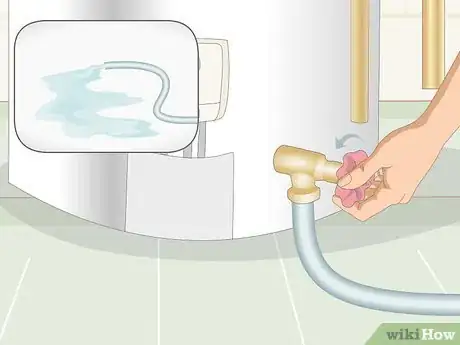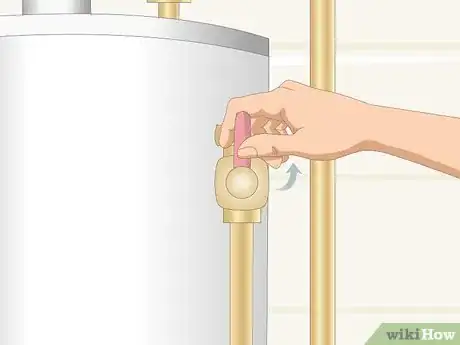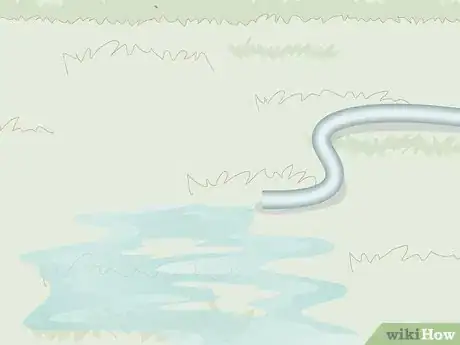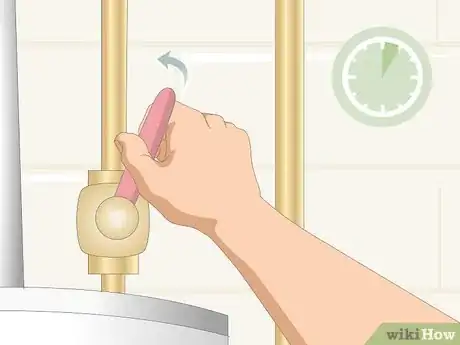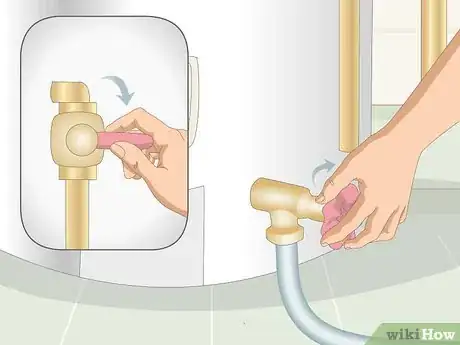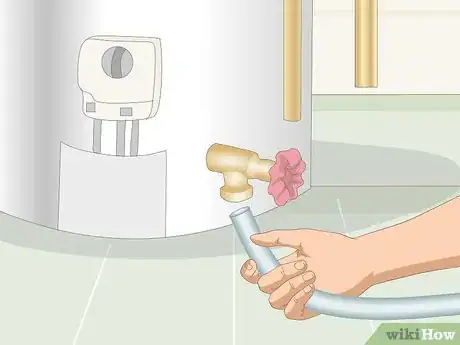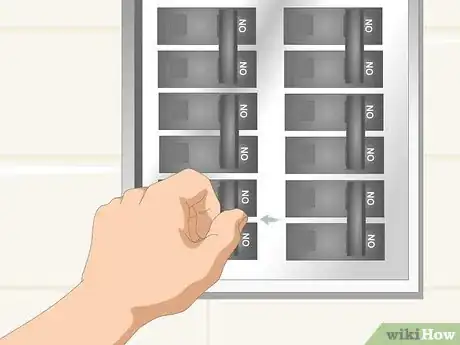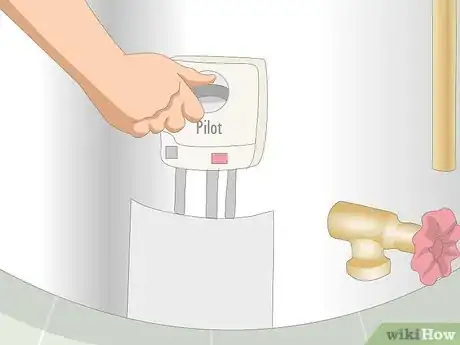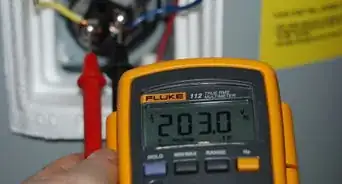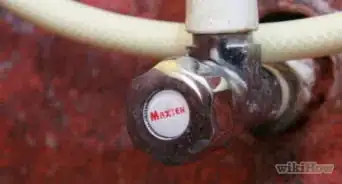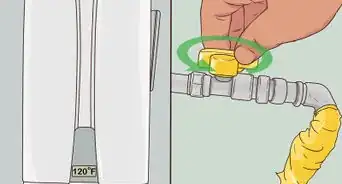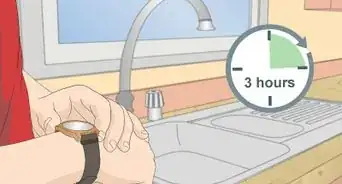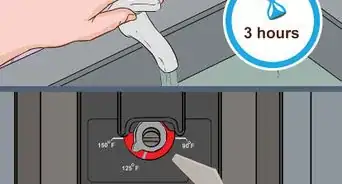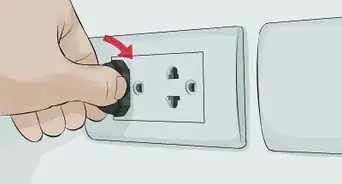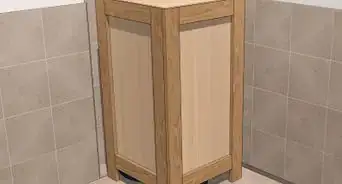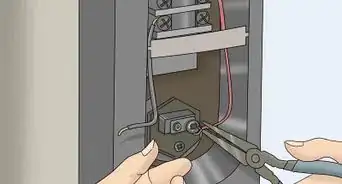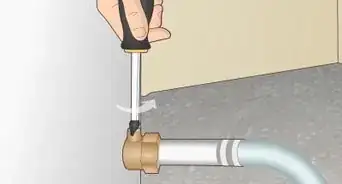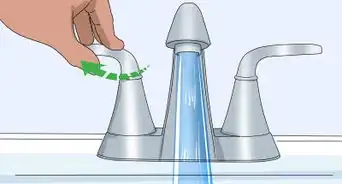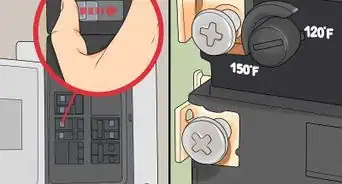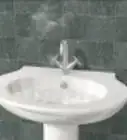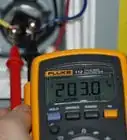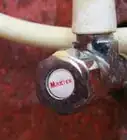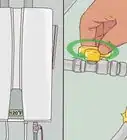This article was co-authored by Patrick Johns. Patrick Johns is a Home Improvement Specialist and the Owner of CatchAll Handyman Services. With more than 28 years of experience, he has worked on a variety of home improvement projects, such as carpentry, plumbing, and door and window installations in both commercial and residential properties.
This article has been viewed 200,567 times.
You need to drain your water heater at least once a year to remove any sediment that builds up and keep it in working order. Fortunately, draining a water heater is super easy to do. Start by turning off the power or gas and then connect a garden hose to the drain valve. Pop open the drain and pressure relief valves to allow the water to drain out completely. Turn the water supply back on to flush out any remaining sediment. Then, close up the valves, restore the power or gas, and you’re all set!
Steps
Connecting a Hose to the Drain Valve
-
1Turn off the power if you have an electric water heater.Find your fuse box or circuit breaker box and check the diagram on the inside of the panel to identify the breaker that controls the power to your water heater. Flip the switch to shut off power to the water heater so you don’t shock yourself.[1]
- Use a flashlight or set up a lamp near the water heater so you can see while you’re working.
-
2Flip the pilot light switch to “Pilot” if you have a gas water heater. Near the pilot light is a switch that controls the flow of gas into the water heater. Move the switch to the “pilot” setting to prevent heating an empty heater and so gas doesn’t leak out while you’re working on it.[2]
- The pilot light will not actually go out, but the gas will be cut off from the water heater.
Advertisement -
3Turn the water supply valve off at the top of the water heater. On the top right side of the water heater is a valve that controls the flow of water into the water heater. Turn the knob or move the switch to shut off the water supply.[3]
- If you can’t locate your water supply valve, check the owner’s manual or look up the make and model of your water heater online to find it.
-
4Attach a garden hose to the drain valve at the bottom of the tank. At the base of the water heater is a small valve called the drain valve. Take a standard garden hose and align it with the threads on the drain valve. Screw the garden hose onto the valve to connect it.[4]
- Make sure the hose is attached securely and the threads are even so water doesn’t leak out.
-
5Place the other end of the hose outside below the level of the drain. Run the garden hose to the outside of the building so the water can run off safely. Make sure the end of the hose is lower than the level of the drain on the heater so the water will flow.[5]
- You could also run the hose to a storm drain in the street so it flows safely into a drainage system.
Tip: If you need to inspect the drained water to look for sediment or damage to your water heater, place the other end of the hose into a 5 gallon (19 L) bucket so you can inspect the water that drains out.
Opening the Drain Valve
-
1Turn the knob on the drain valve to open it. Near the drain valve where the hose is connected is a knob or lever that opens and closes the valve. Turn the knob or lever to open up the valve. Make sure it’s opened all of the way to allow for proper drainage.[6]
- If the valve is difficult to open, use a wrench to help turn it.
Note: Some drain valves require you to use a screwdriver to turn the knob that opens it.
-
2Pull up on the pressure relief valve at the top of the tank to open it. At the top of the water heater is a valve that allows air to flow into the unit in order to relieve pressure that can build up inside of it. Open the pressure relief valve to allow air to run through the valve and drain the water. If water doesn’t start to flow immediately, loosen the nut on the top of the water heater that connects the drain valve to allow more air to pass through.[7]
- Do not remove or entirely separate the nut at the top of the water heater. Just loosen it to allow air to pass through.
- Be careful not to snap or jerk the valves so you don’t risk damaging them.
-
3Allow the water to drain completely. It can take up to 30 minutes for your water heater to completely drain. When the water stops flowing from the garden hose, then the water heater has finished draining.[8]
- Keep an eye on the garden hose to make sure it’s draining properly.
-
4Open the water valve for 5 minutes to flush out the water heater. Sediment can collect at the bottom of your water heater so it’s important that you run fresh water through it to flush it all out. Turn the water valve to start the flow of water through the heater so it drains through the drain valve.[9]
- Allow the fresh water to flow for at least 5 minutes and then turn it off again.
Turning the Water Heater Back On
-
1Close the drain valve and pressure relief valve. Turn the valve to close the drain where the hose is connected. Make sure it’s fully closed. Then, close the pressure relief valve on the water heater and tighten the nut on top if you loosened it.[10]
- It’s important that the valves are closed tight so they don’t leak when you turn the water heater back on and allow it to fill up.
-
2Disconnect the garden hose from the drain valve. Unscrew the garden hose from where it’s connected to the drain valve. Bring it outside and dump out any water contained inside of it so it doesn’t develop mold or mildew that can damage it.[11]
- Wrap up the hose and store it when you’re finished using it.
-
3Flip the breaker to turn the electricity back on. If you have an electric water heater, turn the power back on by flipping the breaker that controls the electricity to it. Close the circuit breaker box up when you’re finished.[12]
- If power isn’t immediately restored to the water heater, try flipping the breaker off and back on again.
-
4Turn the pilot light to the “On” position if it’s a gas water heater. To turn a gas water heater back on, you need to restore the flow of gas into the water heater. Flip the pilot light switch back into the on position.[13]
Tip: Relight the pilot light if it was extinguished by turning the valve to the “Pilot” position and using the ignitor switch on the valve or a long lighter if there isn’t an igniter.
Community Q&A
-
QuestionWhere is the pressure valve located, and how can I open it on the tank?
 Community AnswerIt is typically located on the top or side of the water heater. There should be a pipe connected to it, leading outside or to within six inches if the ground. There is a small lever on it. Be careful when opening it, as hot water can flow from the valve very rapidly.
Community AnswerIt is typically located on the top or side of the water heater. There should be a pipe connected to it, leading outside or to within six inches if the ground. There is a small lever on it. Be careful when opening it, as hot water can flow from the valve very rapidly. -
QuestionI have well water. Is it safe to put a gallon of vinegar in the tank for the 3 months maintenance to absorb the lime? Will this keep lime deposit from forming?
 Community AnswerThey won't dilute, and the water will taste like you mixed Caesar salad in it.
Community AnswerThey won't dilute, and the water will taste like you mixed Caesar salad in it. -
QuestionIs it safe to drain water with sediment into the toilet?
 Community AnswerYes. The sediment is likely to include a lot of red-brown rust; if the toilet porcelain is old and pitted, some of that color might adhere to the bowl interior. Be prepared to clean that out.
Community AnswerYes. The sediment is likely to include a lot of red-brown rust; if the toilet porcelain is old and pitted, some of that color might adhere to the bowl interior. Be prepared to clean that out.
References
- ↑ https://todayshomeowner.com/video/how-to-drain-a-water-heater/
- ↑ https://todayshomeowner.com/video/how-to-drain-a-water-heater/
- ↑ https://youtu.be/W5nuZj3wPwA?t=50
- ↑ https://www.bobvila.com/articles/how-to-drain-a-water-heater/
- ↑ https://www.bobvila.com/articles/how-to-drain-a-water-heater/
- ↑ https://www.bobvila.com/articles/how-to-drain-a-water-heater/
- ↑ https://youtu.be/W5nuZj3wPwA?t=109
- ↑ https://todayshomeowner.com/video/how-to-drain-a-water-heater/
- ↑ https://todayshomeowner.com/video/how-to-drain-a-water-heater/
About This Article
To drain a water heater, start by turning it off and let the water cool for a few hours. Once the water in the heater has cooled, turn the cold water intake valve off and run some hot water from a faucet in your house to empty out excess water in the pipes. Then, open the pressure relief valve on the tank and connect a long garden hose to the drain valve. If your heater is above ground, just let the water drain out of the tank and through the hose to an outdoor location. If your heater is below ground, use a pump to pump the water up through the hose. If you want to learn more, like how to flush your water heater, keep reading the article!
